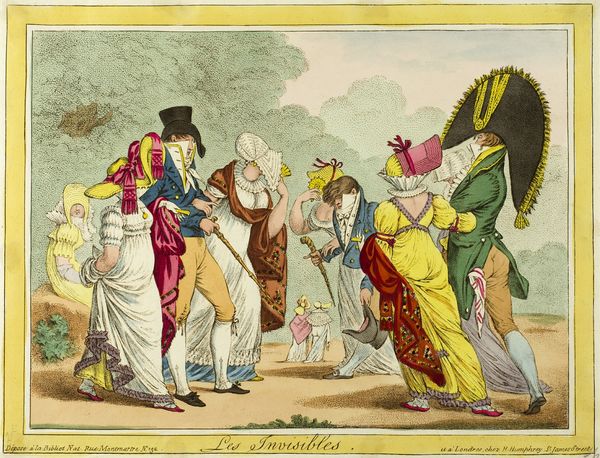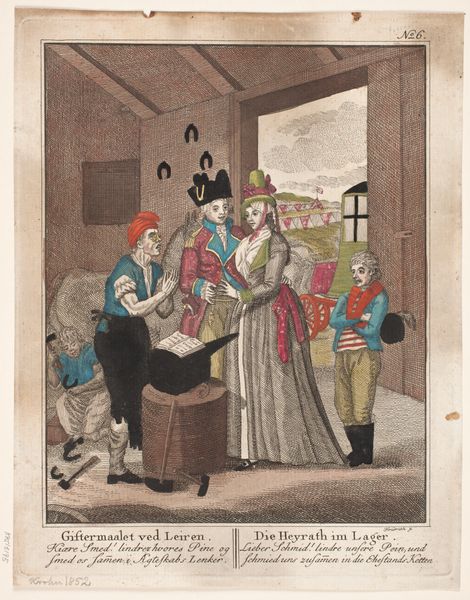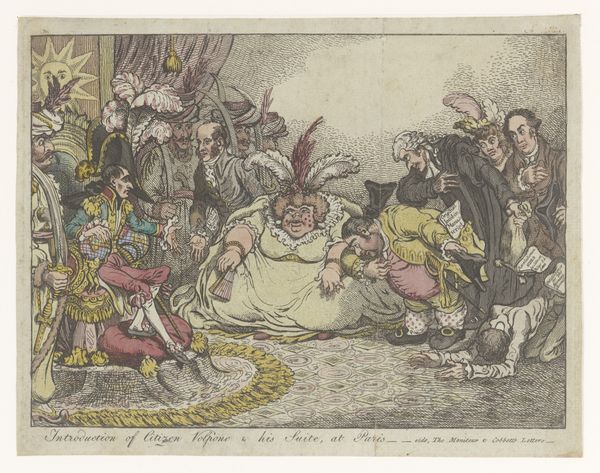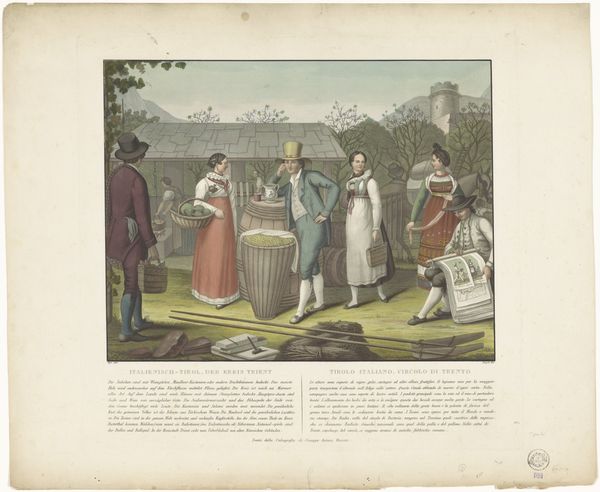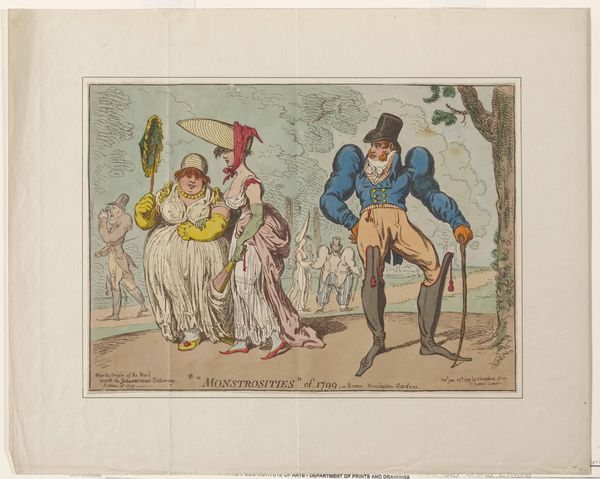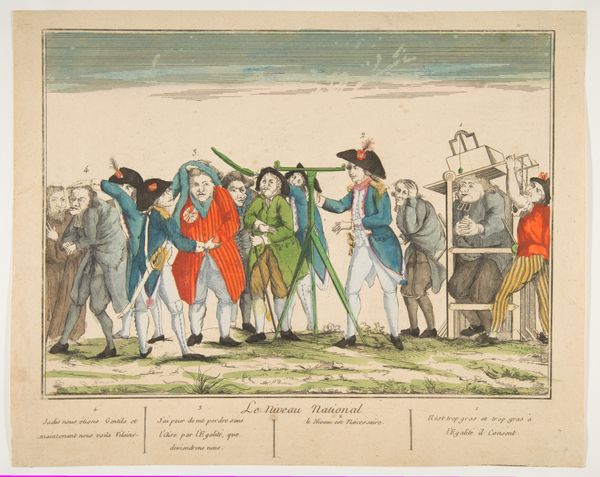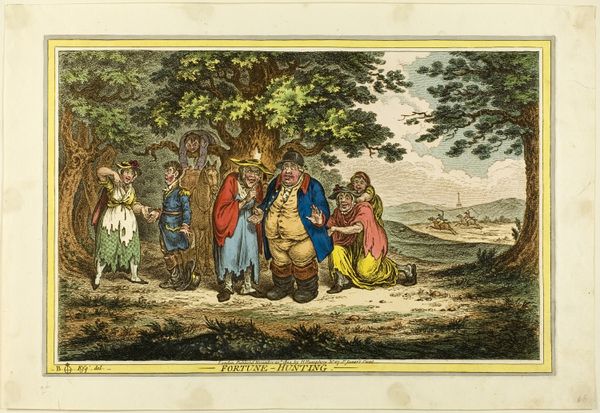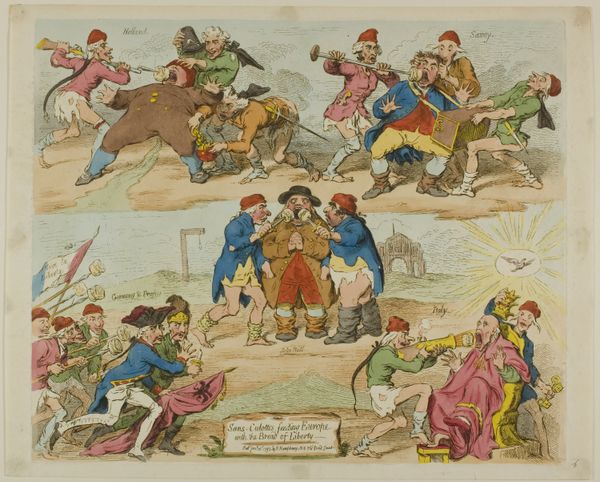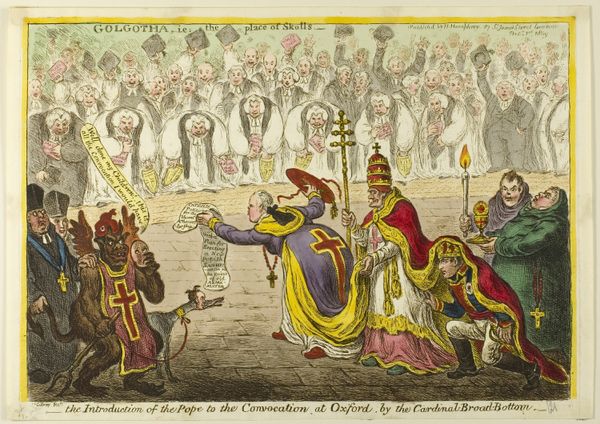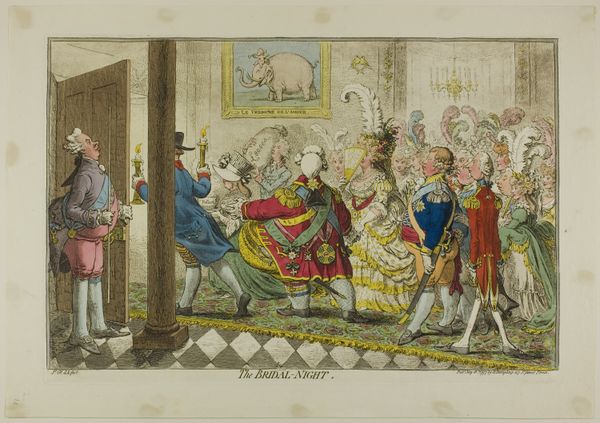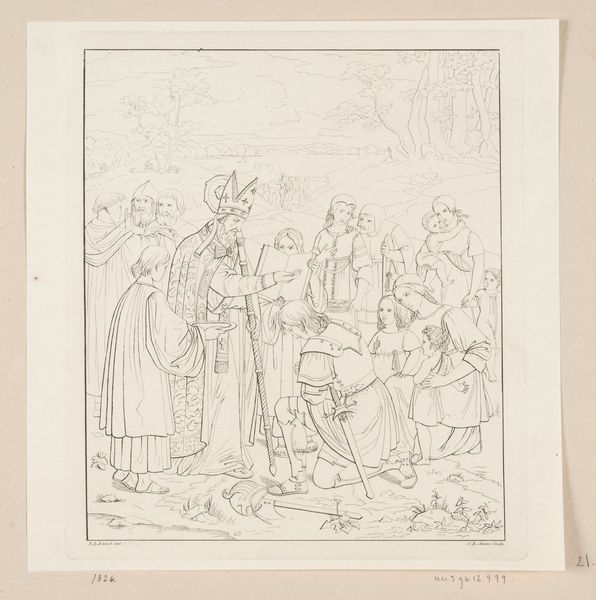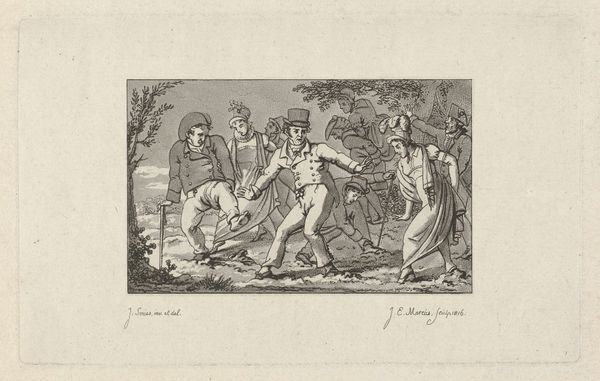
drawing, coloured-pencil, print
#
portrait
#
drawing
#
coloured-pencil
# print
#
caricature
#
caricature
#
figuration
#
coloured pencil
#
romanticism
#
genre-painting
#
watercolor
Dimensions: Sheet: 9 5/16 x 12 7/8 in. (23.6 x 32.7 cm)
Copyright: Public Domain
Curator: So, here we have William Brocas's "Les Invisibles," or "The Invisible Ones," a colored pencil drawing created around 1810. It presents a group of figures outdoors. My initial impression is that it feels very crowded, a bit satirical. The faces are almost completely obscured by elaborate hats and clothing. Editor: I would certainly agree with that assessment. One reads these caricatures through the lens of fashion and social satire from the early 19th century, with class hierarchies dictating extreme displays of wealth. How do the upper classes assert their status when the Revolution theoretically espouses equality? Through exaggerated, ridiculous displays. Curator: Exactly! These "invisibles," shrouded in finery, paradoxically make themselves conspicuous targets of ridicule. It also brings up ideas around the construction of public persona during this period, in a moment in which social mobility began to affect all European social classes. We tend to think of personal display of status as a modern phenomenon, but these ideas clearly reach much deeper in history. Editor: Look at the exaggerated shapes and gestures: The way they tilt their heads, the excessive frills on their bonnets, the elaborate military attire on one of the male figures. The coloring is very striking too, an almost pastel palette to accentuate the ridiculousness through contrast. It's a comedy of surfaces! It mocks a culture obsessed with superficiality. Curator: Right. One sees the print tradition emerging at this period and its contribution to cultural and political discourse. Prints, like "Les Invisibles," democratized caricature and allowed ideas around identity and political discontent to circulate among various publics, whether within social strata or through pamphlets on the street. What's funny, what isn't? Editor: What I find interesting is the suggestion of absence, despite the detail rendered in costume and decoration. By visually obscuring the faces, Brocas almost proposes that identity becomes subsumed by performance. In the absence of an authentic self, only roles and clothes persist. Curator: So in our present world of carefully cultivated online profiles and curated personal brands, perhaps “Les Invisibles” still speaks to anxieties about authenticity, albeit dressed in period garb! Editor: Indeed! It would appear so. Even today, identity often dissolves into image, perhaps making Brocas's commentary evergreen.
Comments
No comments
Be the first to comment and join the conversation on the ultimate creative platform.
